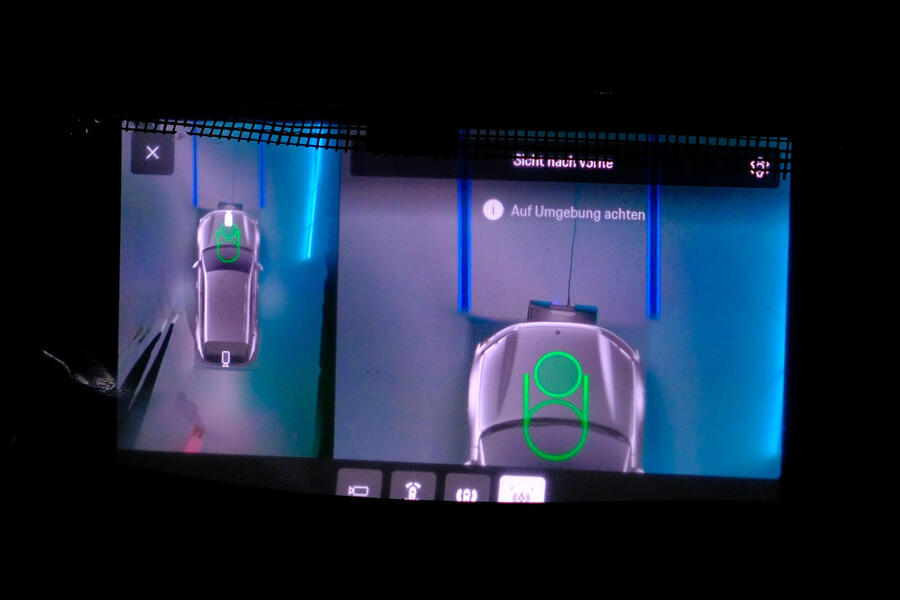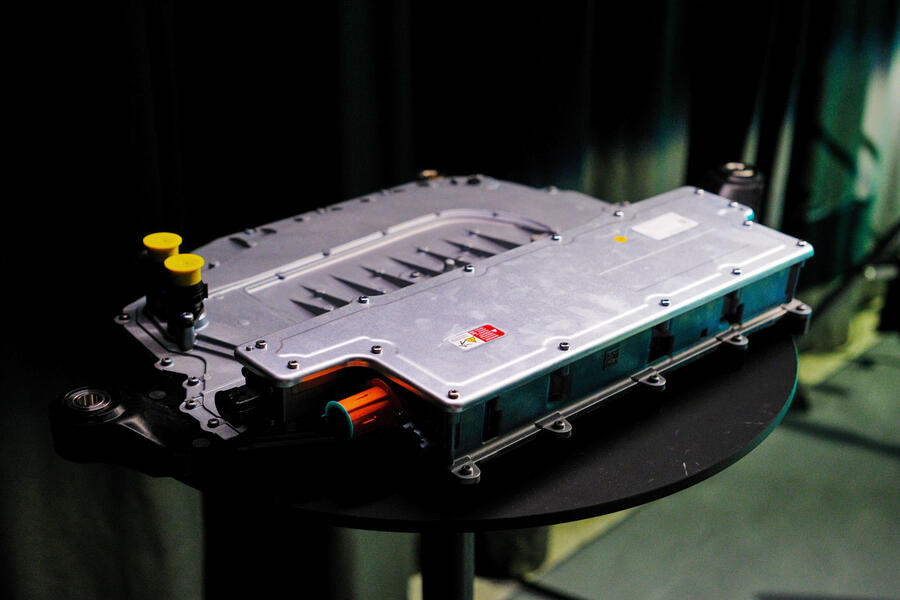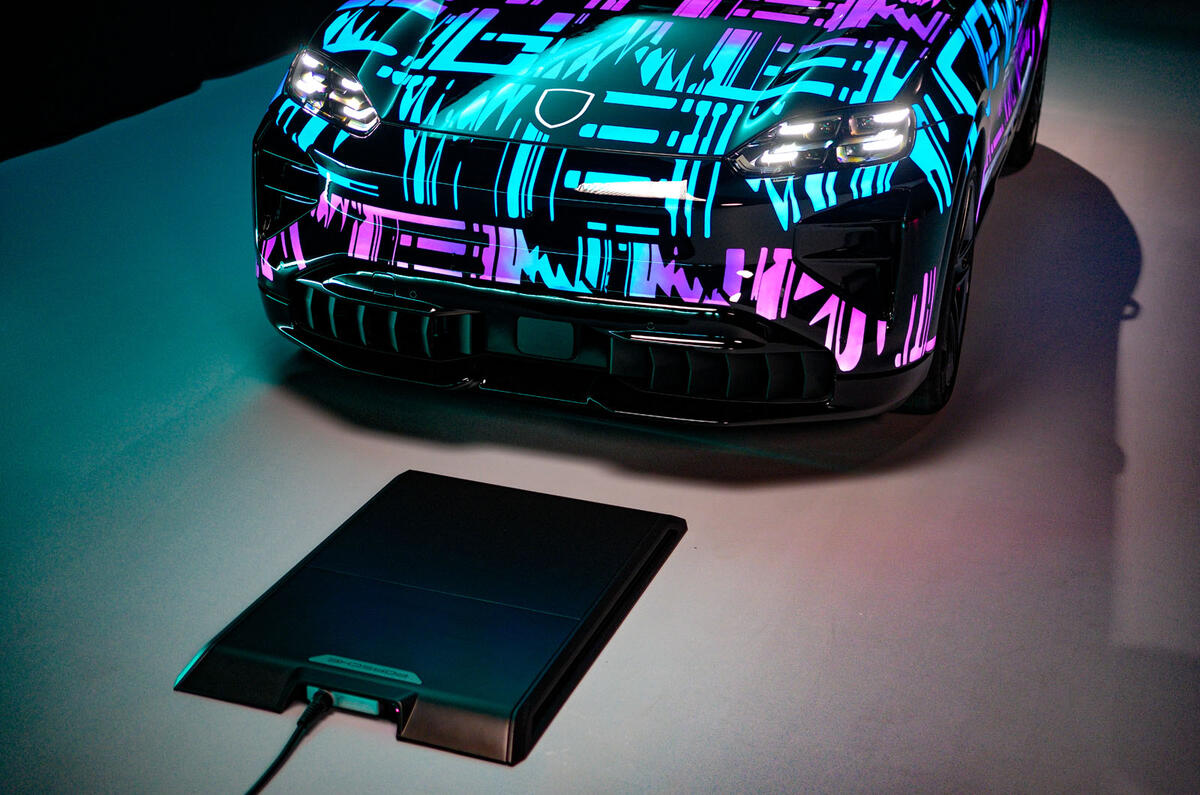Opening the DRS flap increases your slipperiness by 23%, which is a similar effect to what you get on F1 cars. It slams shut if throttle application goes below 98%. Meanwhile, the dampers are manually adjustable but run in one of three electronically controlled presets that the driver selects via one of the four steering wheel rotaries.
Another of the three rotaries is for the aero setting: swivel to Track mode and a vast chin spoiler deploys from nowhere with a loud slap. Then you have the powertrain modes and, of course, ride height. The dials themselves appear lifted from the GT3 RS but are made by RML and feel OEM-grade.
At this point, I commit the sin of asking about the bodykit concocted by ex-McLaren designer Darryl Scriven, which evokes the fabulous 911 GT1 Strassenversion of 1997. Only 20 of these homologation specials were made, so RML’s GT Hypercar will be half as rare, with 40 planned.
It’s a slip of the tongue, because I well know the gold-tinged carbon-fibre that enshrouds the underlying 911 monocoque is no mere ‘kit’. Still, it earns me a rebuke from Mallock that’s justified when we visit RML’s production facility later that day. In one bay, an upturned carbon clam the size of a skip is waiting to be flipped over and bonded onto the car’s 911 core using only 4kg of adhesive.
Porsche Cayenne Electric gets radical wireless charging tech
New system will allow new electric SUV to charge without plugging in – but it won’t be cheap

News
by Richard Lane
2 mins read
4 September 2025
Share
The Porsche Cayenne Electric will be offered with a wireless charging pad, claimed to be the first manufacturer-supported inductive charging solution on the market.
Officially named Porsche Wireless Charger (PWC), it offers speeds up to 11kW and works in temperatures ranging from -40 to 50deg C. Porsche claims it’s unaffected by debris such as leaves or snow. The pad operates at around 90% efficiency.
The pad is straightforward to initiate. When driving towards it, the car’s digital display cuts to gridlines overlaid on a feed from a forward-facing camera, to help the driver line up with the pad, drive over it and park in just the right place.
The Cayenne’s air suspension then lowers the body a few centimetres, a magnetic field fires up beneath it and the invisible transfer of electrons into the battery begins.

You can’t embed the 60mm-tall, 50kg pad into the floor of a driveway or garage for total integration, as this would involve obscuring the sensors that help guide the car onto the pad. It is however completely self-sufficient, as no wallbox is required.
All UK-spec Cayenne EVs will be prepared with the necessary wiring and hoses to accept the 15kg, water-cooled charge receptor that is bolted behind the protective underbody cladding at the front of the car – but the unit itself will be an option, costing around £2000. The pad costs an additional £3000.

Latest Reviews

Polestar 5 prototype review

Chery Tiggo 7

Xpeng G9

Vauxhall Grandland
7

BYD Atto 2
6
Read our review
Car review

Porsche Cayenne Electric prototype review
Crucial all-new version of luxury SUV promises enormous performance, delectable handling, a long range and off-road capability all at once
Back to top
Moreover, if a quicker-charging system becomes available in the future, software alone won’t be enough to realise that improved rate, said Porsche, so newer hardware would be required.
Safety systems are integrated into the pad. For example, if the neighbours’ cat is drawn to the heat of the pad, its foreign object detection system will cut the magnetic charge field. When the cat moves, the charging will recommence.
The system is also equipped with an LTE and wireless LAN module, so it can be controlled via the My Porsche app. Similar to a wallbox, charging can be started and stopped manually or set for activity at off-peak times, and preconditioning is possible.
The PWC will become available next year, when the Cayenne Electric goes on sale with circa-400kW cabled charging speeds and, in top-spec Turbo form, around 1000bhp.


Leave a Reply